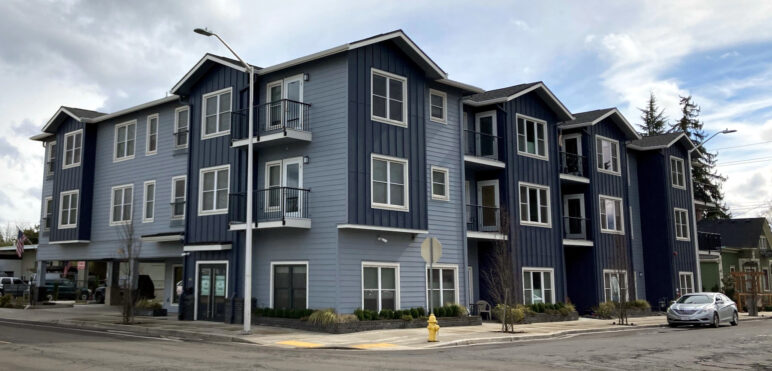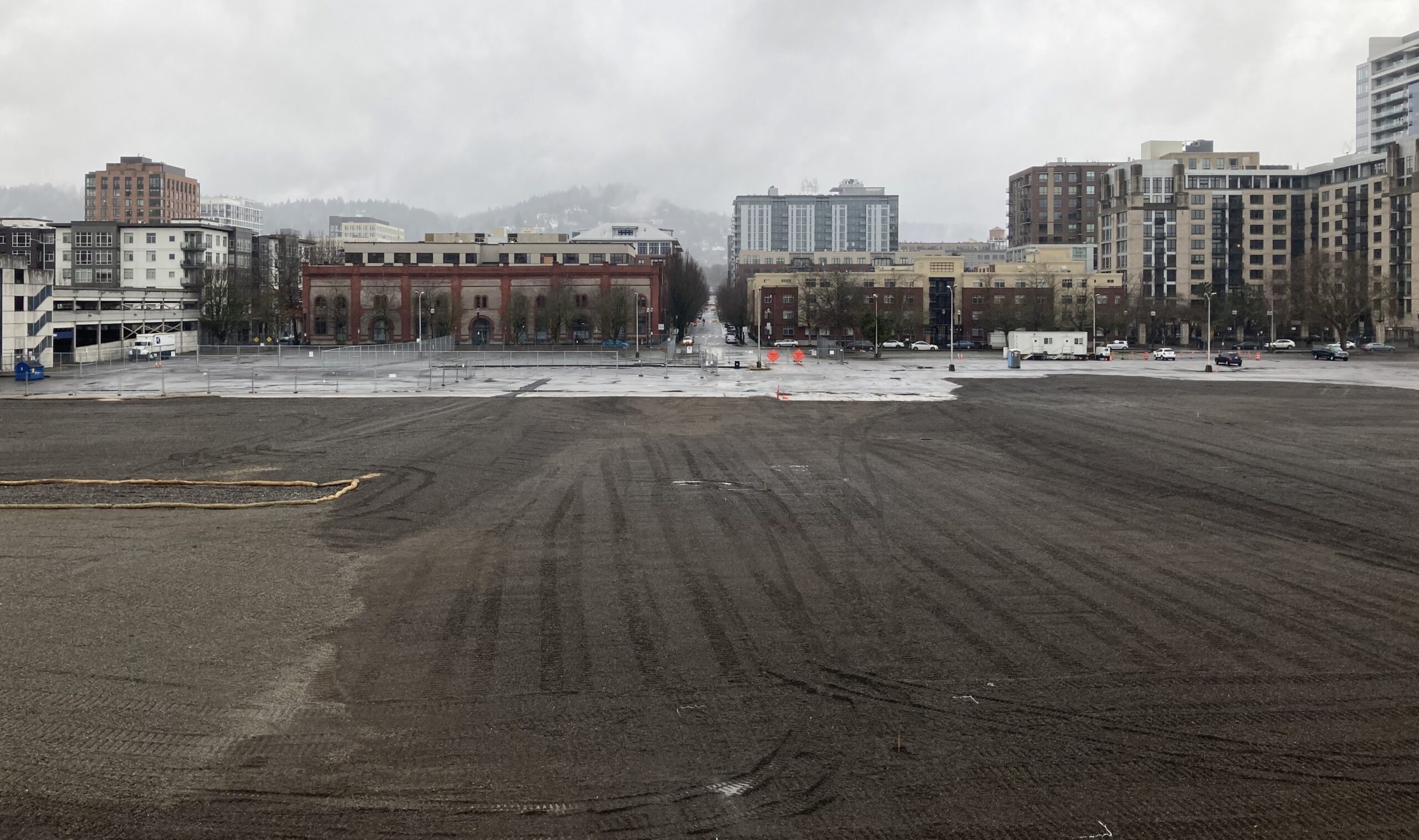This article is part of the series Housing Every Oregonian
Find audio versions of Sightline articles on any of your favorite podcast platforms, including Spotify, Google, and Apple.
Oregon is basking in a bit of bipartisan consensus. The state, most people agree, needs more homes.
That’s it. That’s the extent of the consensus. As the state’s brief 2024 legislative session launched this week, Oregonians on left and right were girding for battle over what, exactly, to do about this shared housing shortage. In the middle of the battlefield was a bill developed by Gov. Tina Kotek, which includes various ideas from left, right and center aimed at accelerating homebuilding.
But as many lawmakers and interest groups try to tug the contents of that bill in their direction, it’s also worth stepping back to ask: What, in the broadest sense, caused this decades-long underproduction of housing that we can all agree exists? Before Oregonians start negotiating over specific policy goals like quick-and-dirty sprawl allowances or revolving zero-interest loan funds, they should understand in some more general way why this problem, unlike shortages of toilet paper or baby formula, seems unable to solve itself.
The answer to that question—what actually causes housing shortages?—is the starting point for a new Sightline series that begins today. In the weeks and months to come, we’ll lay out a housing agenda that Oregon could achieve under its most housing-focused government in many years.
But first, as so often happens in the first U.S. state to impose state-level urban growth boundaries, we need to talk about urban sprawl.
To avoid growing out, grow in. but what stops infill?
For decades, many Oregonians have claimed that the simple answer to Oregon housing problems is that in Oregon, developers are not allowed to build subdivisions wherever they can afford to. Instead, “urban growth boundaries” around every city let the state and regional governments dictate where new suburban development is allowed. The boundaries are designed to gradually expand as needed, but some say they should expand faster, or be abolished.
To which other Oregonians have long replied: but there’s lots of space for more homes inside urban boundaries. It’s in backyards, abandoned malls, half-empty parking lots, and the sky.
Damon Motz-Storey, head of Oregon’s Sierra Club chapter, spoke for many environmentalists on Sunday. “I see empty lots in popular, central Portland neighborhoods all the time,” Motz-Storey wrote. Motz-Storey was right; as right as if they’d said it about Hillsboro, Salem, Monmouth, or Burns.
But Motz-Storey’s accurate observation also raises a question. Why does one see empty lots all the time? If these would be good locations for housing, why weren’t homes built there already?
The answer, once you clear away all the details, is not complicated. The thing that stops homes from being built in a housing shortage is that the cost of building them outweighs the revenue they would bring in.
Pointing at an empty lot or shopping mall isn’t, in itself, an answer to a housing shortage. To actually create more infill housing in a market economy, one or both of these two things has to happen:
- the cost of building infill homes needs to go down, or
- the amount of money to be made by building infill homes needs to go up.
Those are the options. There aren’t any others.
We won’t stop rent hikes until we cut the cost of building homes
A market economy, of course, can include government and public programs. And that’s one way to solve for the two-factor equation above: with public housing subsidies.
When the government spends tax money to subsidize a poor person’s rent, or to hire people to build and manage a new below-market apartment building, that’s a form of option (2) above. This can be good. But it’s only as good as we can find public money for it—and there are always plenty of competing ideas for how to spend public money. (On Wednesday, state economists estimated that Oregon’s legislature has about $1.3 billion in new money to allocate this year; Kotek’s housing bill, if fully funded, would use more than a third of that.)
The other, and unfortunately far more common, version of option (2) is something that almost anyone who’s rented a home in Cascadia in the past 20 years has plenty of experience with: rent hikes. When there are more people looking than there are homes in places people want to live, people bid against each other for the ones that exist. Landlords get more negotiating power, prices go up, and people with less money get locked out. If the government limits rent hikes, as Oregon does, that can slow this process a bit for some people. But it can’t stop the process.
The whole basis of Oregon’s consensus about the need to produce more homes is that rapidly rising home prices are bad. In that sense, “accelerate homebuilding by waiting for rents to go up” is perfectly acceptable to a real estate developer, but for the public it’s no solution at all.
So, if we don’t want rents to go up and we don’t have unlimited public money to subsidize rents, what’s left? Option (1): making it less expensive to build homes.
When it’s getting less expensive to build homes, rents don’t need to go up before more homes get built.
This is the escape hatch; this is the win-win scenario. And the bad news for Oregon this winter is that almost nothing in Gov. Kotek’s big housing bill advances it directly.
Oregon has many opportunities to reduce barriers to infill homes

Here’s the good news: Gov. Kotek seems to know what’s up.
“Oregon currently has a shortage of 140,000 homes across our state,” she told the legislature last year, testifying for a prior version of her bill that didn’t include urban growth boundary expansion but would have done more to reduce barriers to infill housing. “This deficit negatively impacts our state’s economic growth. It has made homes less affordable to Oregonians looking to move up the economic ladder, and it is the fundamental cause of our homelessness crisis.”
“I know these are difficult conversations,” Kotek went on. “But we must be willing to do things differently if we are going to stop making it so unreasonably difficult to build housing in our state. We must act with the level of urgency that Oregonians are demanding of us.”
Maybe that attitude is why Kotek and some legislative colleagues in both parties last year passed several other bills that could, if implemented well, reduce the cost barriers to infill housing within current urban growth boundaries. And why they’re considering future laws that could do more.
In this series, Sightline will look, one by one, at these opportunities for Oregon to find an escape hatch from its housing shortage. We’ll look mostly at potential state policies, but also some local ones. We’ll be looking past the month-long legislative session that began this week toward the long five-month session in 2025. And we’ll be focusing on the politically achievable, including incremental changes that could improve Kotek’s flagship housing bill in 2024. (Which, to be clear, does include various good ideas worth passing.)
“Our lawmakers should be doing everything it takes to increase housing density and add housing to inner areas,” Motz-Storey, the Sierra Club director, wrote on Sunday.
Maybe, even in an election year, most Oregonians can agree on that. Because if we don’t go looking for ways to hold down home prices, higher home prices are going to come looking for us.



Comments are closed.